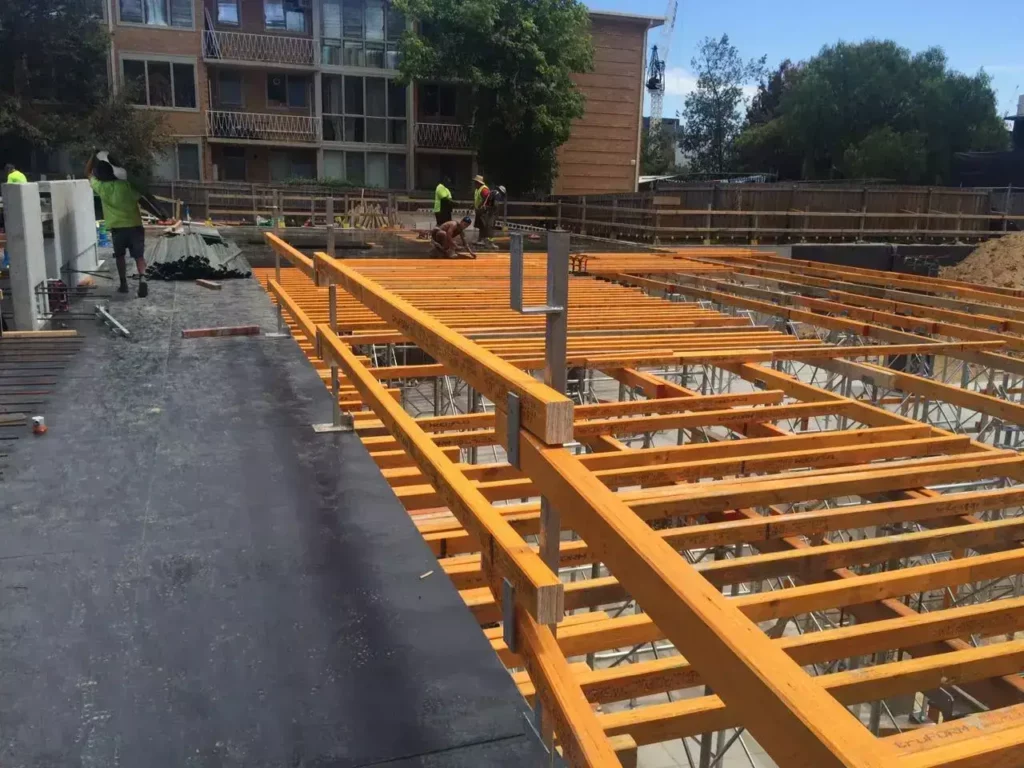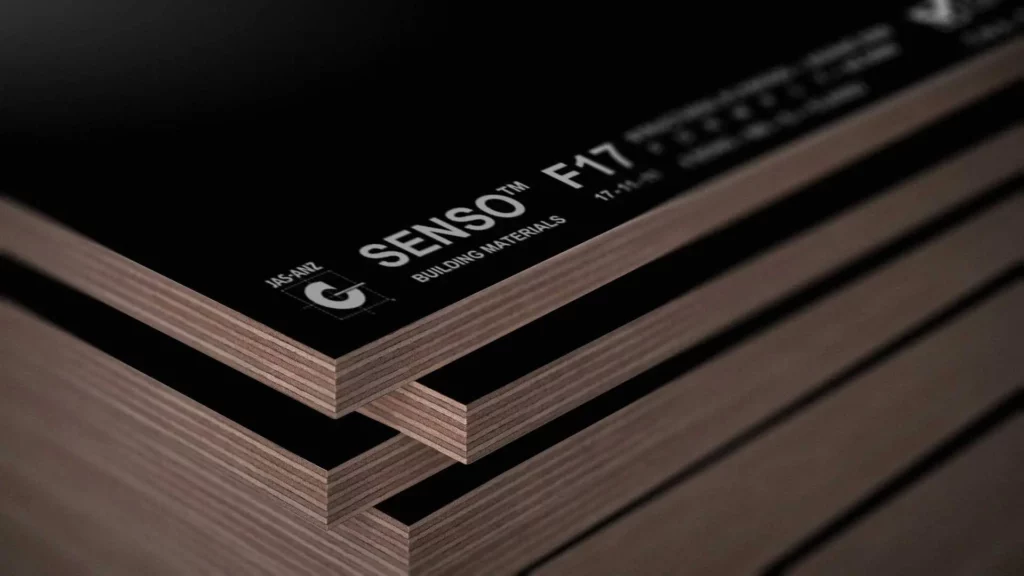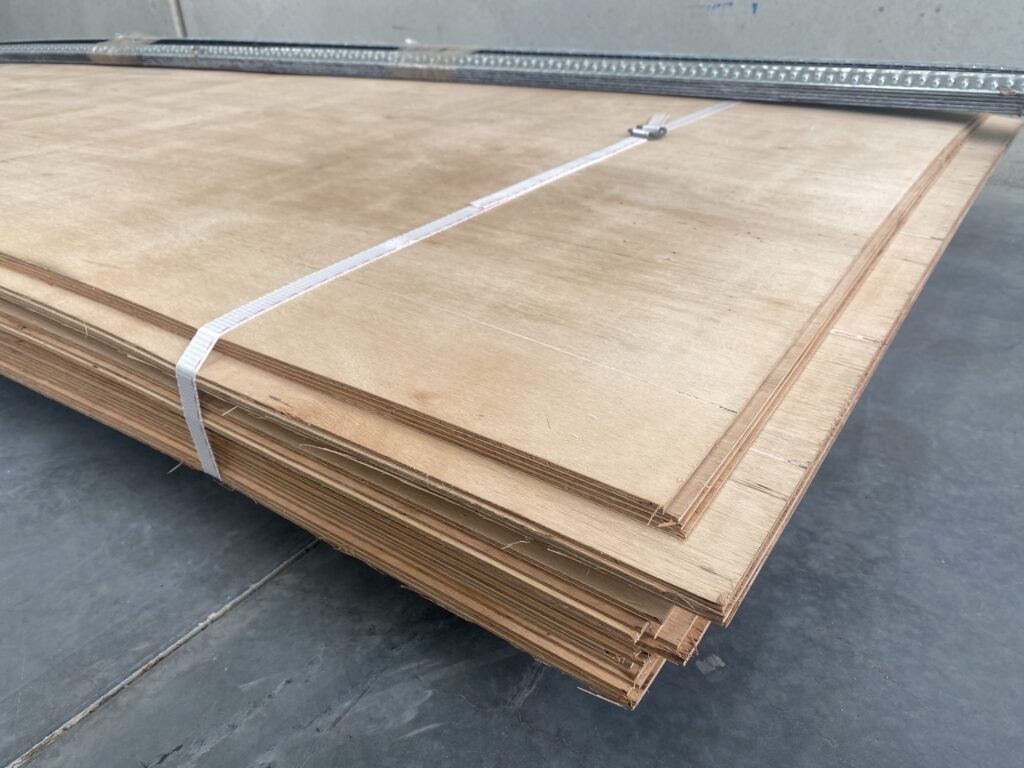F17 grade plywood is widely used in high-stress construction environments due to its exceptional durability and versatility. This article aims to provide a comprehensive understanding of F17 grade plywood, its characteristics, and its performance in challenging construction settings.
Understanding F17 Grade Plywood
Composition and Manufacturing Process
F17 grade plywood is typically made from multiple layers or veneers of cross-laminated wood. Each layer is bonded together using a strong adhesive, resulting in a robust and stable construction material. The manufacturing process involves cutting the wood into thin sheets, applying glue to the surface, and pressing the layers together under high pressure.
During the manufacturing process, the quality of the adhesive used plays a crucial role in determining the final strength and durability of the F17 grade plywood. High-quality adhesives ensure a strong bond between the layers, enhancing the overall structural integrity of the plywood. Additionally, the precision in cutting the wood veneers and the controlled application of pressure during pressing contribute to the consistent quality of F17 grade plywood.
Key Characteristics and Properties
F17 grade plywood exhibits several essential characteristics that make it ideal for high-stress construction environments. It has excellent structural strength and dimensional stability, allowing it to withstand heavy loads and fluctuating conditions. Additionally, F17 grade plywood has high resistance to moisture, providing protection against decay, mold, and rot.
The plywood’s smooth surface facilitates ease of finishing, ensuring a polished and professional appearance in construction projects. Furthermore, F17 grade plywood’s lightweight nature makes it easy to handle and transport, reducing labor costs and construction time.
Moreover, the F17 grade plywood’s ability to maintain its shape and structural integrity under varying temperature and humidity conditions makes it a reliable choice for both interior and exterior applications. Its resistance to warping, twisting, and cracking ensures long-term durability, even in challenging environmental conditions. The consistent thickness and flatness of F17 grade plywood make it a preferred material for applications where precision and stability are paramount, such as in formwork and concrete shuttering.

High-Stress Construction Environments
Defining High-Stress Environments
High-stress construction environments refer to settings where materials and structures endure significant pressure, intense weather conditions, and frequent mechanical stresses. These environments include but are not limited to bridges, high-rise buildings, industrial facilities, and marine constructions.
When it comes to high-stress construction environments, the demands placed on materials and structures are truly extraordinary. Bridges, for example, must bear the weight of heavy vehicles passing over them day in and day out, while high-rise buildings are constantly battling against the forces of gravity and wind. Industrial facilities face the challenge of withstanding intense vibrations and temperature fluctuations from heavy machinery, while marine constructions must endure the corrosive effects of saltwater and the relentless battering of waves.
Common Challenges in These Environments
In high-stress construction environments, materials are subject to relentless forces such as heavy loads, vibrations, temperature fluctuations, and exposure to moisture. Additionally, they often experience strong winds, seismic activity, and corrosive elements, all of which can lead to structural deterioration and decreased longevity.
Challenges faced in such environments demand the use of construction materials that have exceptional strength, durability, and resistance to environmental factors.
To combat these challenges, engineers and construction professionals have developed innovative solutions such as high-performance concrete mixes, advanced steel alloys, and specialized coatings that provide enhanced protection against corrosion. In addition, cutting-edge technologies like sensors and monitoring systems are being employed to detect early signs of structural stress and potential failures, allowing for proactive maintenance and repairs to ensure the safety and longevity of these critical infrastructure projects.
Read about buying formply at: A Complete Guide to Buying Formply for Your Building Needs
Durability Assessment of F17 Plywood
Factors Influencing Durability
Several factors contribute to the durability of F17 grade plywood in high-stress construction environments. The core materials’ quality, adherence to manufacturing standards, and proper installation techniques significantly impact the plywood’s ability to withstand stress and maintain its structural integrity over time.
Furthermore, the exposure to external elements, such as moisture, UV radiation, and harsh weather conditions, can affect the plywood’s durability. Regular maintenance and timely repairs are crucial for ensuring the prolonged lifespan of F17 grade plywood in such environments.
Additionally, the design of the structure and the distribution of loads play a vital role in determining the durability of F17 plywood. Proper engineering calculations and considerations for potential stress points can help optimize the performance and longevity of the plywood in construction projects.
Moreover, the quality of the adhesive used in bonding the layers of the plywood together is essential for its durability. A high-quality adhesive that can withstand environmental factors and maintain its strength over time is crucial for ensuring the structural stability of F17 grade plywood.
Testing Methods and Results
To determine the durability of F17 grade plywood, extensive testing methods are employed. These tests assess the plywood’s strength, resistance to deformation, load-bearing capacity, and ability to withstand various environmental stressors.
Results consistently demonstrate the exceptional performance of F17 grade plywood in high-stress construction environments. The plywood’s structural integrity remains intact even under extreme conditions, making it a reliable choice for demanding projects. Find more about environments on https://www.twinkl.com.pk/teaching-wiki/environment
Furthermore, ongoing research and development in the field of plywood manufacturing continue to improve the durability and performance of F17 grade plywood. Innovations in materials, manufacturing processes, and treatment methods aim to enhance the plywood’s resistance to environmental factors and increase its lifespan in challenging construction environments.
Comparing F17 Plywood with Other Materials
Strengths and Weaknesses of F17 Plywood
F17 grade plywood offers several advantages over other construction materials. Its high strength-to-weight ratio makes it superior to traditional solid wood, as it provides the same structural stability while being significantly lighter. It also outperforms materials like concrete and steel in terms of thermal insulation.
However, F17 grade plywood may not be suitable for all construction applications. It might not possess the same fire resistance as certain fire-rated materials, necessitating additional fireproofing measures in specific scenarios.
When it comes to sustainability, F17 plywood is known for its eco-friendly properties. The manufacturing process of plywood involves using thin layers of wood glued together, making efficient use of timber resources. This sustainable approach aligns with the growing emphasis on environmentally conscious construction practices.
Alternatives to F17 Plywood in High-Stress Environments
While F17 grade plywood is a top choice for many construction projects, alternatives exist for specific requirements. Depending on the project’s needs, materials like composite fibers, laminated veneer lumber, or engineered wood products may provide suitable alternatives.
Composite fibers, for instance, offer exceptional strength and durability, making them ideal for high-stress environments where traditional materials may fall short. Laminated veneer lumber, on the other hand, combines the structural integrity of plywood with the versatility of solid wood, providing a unique solution for varied construction challenges. Exploring these alternatives allows construction professionals to tailor their material choices to the specific demands of each project, ensuring optimal performance and longevity.

Practical Applications of F17 Plywood in Construction
Suitable Construction Projects for F17 Plywood
F17 grade plywood is a versatile material that plays a crucial role in various construction projects. Its strength, durability, and resistance to deformation make it ideal for use in load-bearing structures like beams, columns, and flooring systems. The reliable performance of F17 plywood ensures the structural integrity of buildings, providing a solid foundation for construction projects of all sizes.
Moreover, F17 grade plywood is a preferred choice for formwork and concrete molds due to its flexibility and robustness. Its smooth surface finish allows for easy demolding, making it a practical option for creating intricate shapes and structures in construction.
When it comes to temporary structures, F17 plywood excels in providing quick and efficient solutions. Its lightweight nature coupled with high strength makes it easy to handle and install, saving time and labor costs on construction sites.
Long-Term Performance and Maintenance
Ensuring the longevity of F17 grade plywood requires diligent maintenance practices. Regular inspections to check for signs of wear and tear, moisture control to prevent warping or delamination, and prompt repairs when needed are essential steps in preserving the quality of the plywood over time.
By investing in proper maintenance, construction professionals can extend the lifespan of F17 grade plywood and maximize its performance in high-stress environments. This proactive approach not only enhances the structural stability of buildings but also minimizes the need for frequent replacements, reducing overall construction costs in the long run. To read more about stress click here.
Understanding the unique properties and capabilities of F17 grade plywood empowers construction professionals to make informed decisions when selecting materials for their projects. With its proven track record of durability, strength, and adaptability, F17 plywood continues to be a trusted ally in the ever-evolving landscape of construction, meeting the demands of modern architectural designs and engineering challenges.

